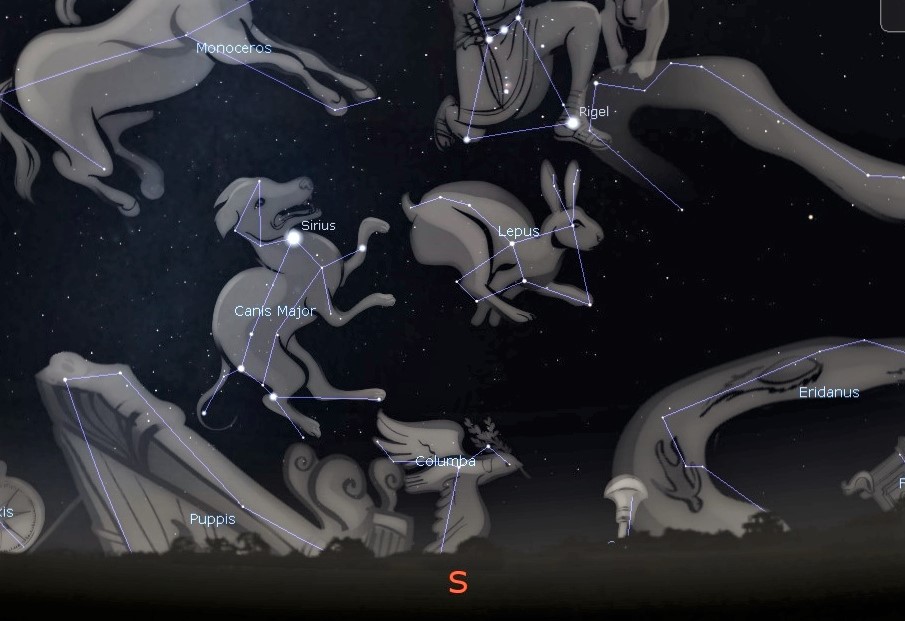This Week’s Sky at a Glance, 2021 December 4 – 11
~by Curt Nason
Soon many naturalists throughout the province will be busy performing Christmas bird counts. If you are on your toes and not too worn out you can add four stellar birds between dusk and dawn. Start with the easy ones around 6 pm by looking for the three bright stars of the Summer Triangle above the western horizon. The lowest of the three is Altair, the head of Aquila the Eagle, which is standing straight up on the horizon. The highest of the trio is Deneb at the tail of Cygnus the Swan, which is doing its signature dive. The third member is Lyra the Harp with its bright star Vega to the right of Altair. A few centuries ago celestial cartographers depicted the harp in the talons of an eagle or vulture, so maybe we can claim that as a fifth bird.
Midnight is your best chance to spot the elusive and tiny Columba the Dove, but you will need an unobstructed southern horizon. Look below Orion for Lepus the Hare, and then try to see stars near the horizon directly below. Very few bird counts will be missing the common crow but, in case you did, look about a hand span above the southern horizon around 6:30 am for a distinct quadrilateral of stars. There you will find Corvus the Crow hitching a ride on the tail of Hydra the Water Snake.
This Week in the Solar System
Saturday’s sunrise in Moncton is at 7:44 am and sunset will occur at 4:34 pm, giving 8 hours, 50 minutes of daylight (7:46 am and 4:42 pm in Saint John). Next Saturday the Sun will rise at 7:51 am and set at 4:33 pm, giving 8 hours, 42 minutes of daylight (7:53 am and 4:41 pm in Saint John). We are having the earliest sunsets of the year this week.
The Moon is new and at perigee on Saturday morning, causing extreme tides over the weekend and into Monday. Whereas the Moon orbits faster near perigee it reaches first quarter phase on Friday evening, but not before passing below Venus, Saturn and Jupiter on Monday through Wednesday, respectively. On Friday evening telescope users have a brief opportunity to see the shadows of two Jovian moons against Jupiter’s atmosphere, as Europa’s enters at 6:13 and Callisto’s exits at 6:16. Mars can be seen with binoculars in the morning sky rising an hour and a half ahead of the Sun. At the end of the week we might be fortunate enough to see some early shooting stars from the Geminid meteor shower.
On Sunday evening at 8 pm, tune in to the Sunday Night Astronomy Show via the Facebook page or YouTube channel of Astronomy by the Bay.
Questions? Contact Curt Nason.

